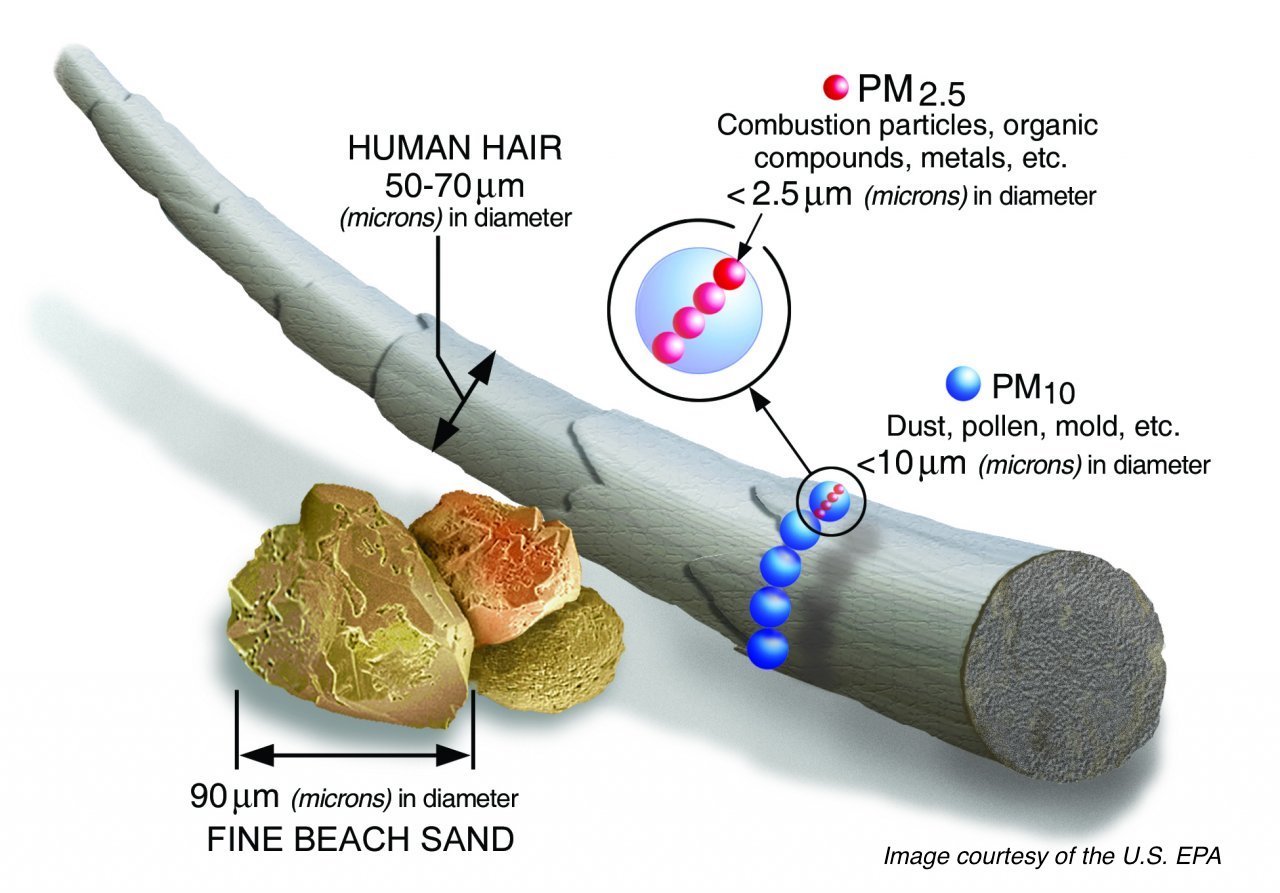Particulates
What is Particulate Matter?
Particulate matter (PM) is a mix of tiny particles and droplets in the air. These particles can come from things like dust, smoke, or chemicals. There are different sizes of particulate matter:
PM_10 refers to particles up to 10 micrometers wide (about 1/7th the thickness of a human hair).
PM_2.5 refers to even smaller particles, up to 2.5 micrometers wide (about 1/28th the thickness of a human hair).
The smaller PM_2.5 particles are especially concerning because they can penetrate your lungs and even enter your bloodstream, seriously affecting your health.
A document from the TCEQ states, “… there are monitoring data around sources with far greater potential for particulate matter production: aggregate production operations (APOs). Similar to concrete batch plants, APOs will have PM emissions from moving and storing sand and gravel, but they also include sources that can produce far more PM, such as rock crushers.” [emphasis added]
Exposure to such particles can affect both your lungs and your heart. Numerous scientific studies have linked particle pollution exposure to a variety of problems, including:
premature death in people with heart or lung disease
nonfatal heart attacks
irregular heartbeat
aggravated asthma
decreased lung function
increased respiratory symptoms, such as irritation of the airways, coughing, or difficulty breathing.
People with heart or lung diseases, children, older adults, minority populations, and low socioeconomic status populations are the most likely to be affected by particle pollution exposure, either because they are more sensitive or may have higher exposures.
“Breathing high levels of particle pollution day in and day out can also be deadly. A 2022 public health study covering large population centers in seven western European countries found that long-term exposure to very low levels of PM2.5 was strongly associated with non-accidental, cardiovascular, non-malignant respiratory and lung cancer mortality.” — American Lung Association
Particulate matter (PM) from concrete crushing consists of tiny dust particles released into the air during the process of breaking down concrete into smaller pieces for recycling or disposal. This dust includes a mix of materials such as silica, limestone, and other minerals and can vary in size from coarse particles (PM_10) to fine dust (PM_2.5). Effective dust control measures, such as water spraying or dust collection systems, are crucial in minimizing these emissions and protecting both workers and nearby communities from the adverse effects of concrete crushing operations.
